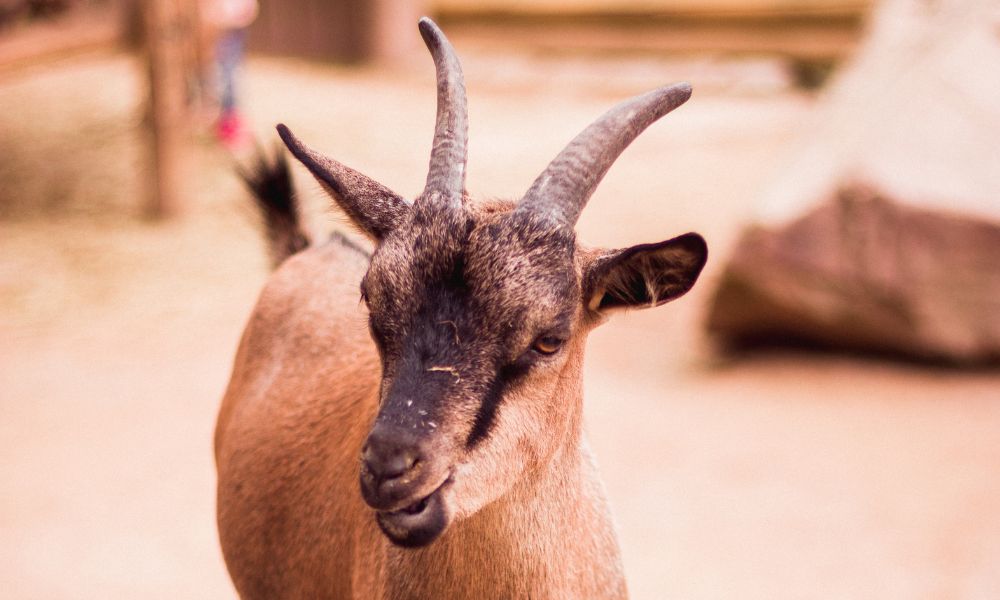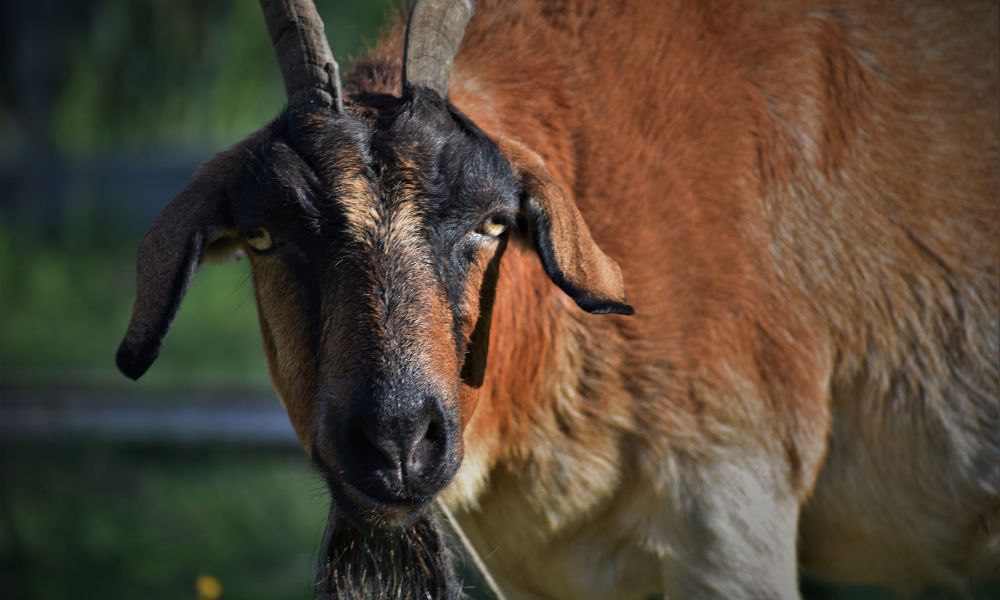Horns are quite a strange organ, when you think about it—we really have no equivalent in our bodies.
No hard, bony protrusions from our heads. But are goat horns solid, or hollow?
Most animals that have horns tend to have hollow horns.
There are a variety of reasons for this, mostly practical.
But it is clear to see that the overwhelming prevalence of hollow horns in currently living species indicates a massive preference natural selection has for this trait.
Let’s look further into this.
Are goat horns solid or hollow?

Goat horns, when a goat reaches maturity, are hollow.
There are essentially two parts to a goat’s horns.
There is an inner, bony core, the part that connects to the rest of the goat’s skeleton.
This is the first part to form, after the goat is born.
At first, this is solid, and continues to be solid as it grows.
At around six months old, though, the core becomes hollow.
While the core is developing, the outer part of the horn is also developing.
This part is made from the horny material we call keratin.
This is the same substance used in rhino horns, and even the shells of tortoises.
It’s a very tough substance—much tougher than bone.
The keratin forms an outer shell, surrounding the inner, bony core.
As the goat reaches about 6 months old, the horns become fully formed, and the inner core becomes hollow.
So, you might say a goat’s horns are solid at first, although this isn’t always necessarily true.
Goats’ horns will develop at different speeds and in different ways, so where some might be solid for a while, others become hollow quite quickly.
In any case, a mature goat’s horns are hollow.
Why is this, then?
Why are horns hollow?
There are a variety of reasons to have hollow horns over solid horns—especially if the main purpose of those horns is competing with other males.
These horns can expect to be bashed against other horns very hard, even against other males in the herd.
Minor competitions and squabbles are common.
Solid horns present a number of issues when they are being regularly used like this.
For one thing, there’s going to be no breaking up of the vibrations from the impact.
The solid horn would simply carry them all the way down the skull, where they would rattle against the brain.
Furthermore, horns being broken is not an uncommon sight.

This isn’t even necessarily the result of battling.
When a horn is broken in half, or any part of it is broken off, it causes a great deal less damage due to the fact it is hollow.
Again, an impact that broke a solid horn in two would do a lot more damage to the goat than a hollow horn that more easily broke away.
Finally, on the matter of the horns breaking, it’s also important to note that, as I mentioned, the horns also house some important blood vessels and arteries.
If the entire horn broke off when it was damaged, then not only does it stand a chance of doing damage to the skeletal structure, but of tearing an important artery, too.
By only breaking in half, they can easily clot the wound.
The list could go on.
There are many advantages to having hollow horns, but the simplest reason they are hollow is that natural selection favors hollow horns!
What is inside a goat’s horn?
Goat’s horns are hollow, as I said, but that doesn’t mean there’s nothing inside them.
Again, like with most horned land mammals, the horn itself is made of a substance called keratin.
This is the same for goats, cattle, rams, even deer.
The inner structure is bone, the outer is keratin.
So, a goat’s horn is a tough, keratin housing for an inner, bony structure that attaches the horn to the skeleton.
The horns have to form part of the skeleton, again, to increase their strength.
Other than that, though, a horn is really mostly just those two things.
An outer core of tough keratin, and a hollow, inner, bony core.
There are, as I said, blood vessels and arteries running through as well.
Goat horns are certainly hollow, then, and you can see why that’s advantageous.
Solid horns would, among many other things, just cause a huge amount of damage when they broke, compared with hollow horns.
It is also much less of a shock to a horned goat’s head when it butts heads with another since there aren’t solid vibrations going down its horns into its skull.
And, as I’ve said, goats are far from alone in this matter.
Most animals similar to goats that have horns have hollow horns—it seems to be the way to go!

